 I come by my penchant for jeremiads honestly. My father, Earl Coleman, specialized in them. He delivered them mostly verbally, at the drop of a hat, as rehearsed word-for-word set pieces, though at one point in his later years he self-published a printed newsletter titled Jeremiah: I’m Mad as Hell, in which he underscored every other noun, verb, and adjective for emphasis, sometimes capitalizing their first letters for good measure. (You’ll find a few samples online here, sans the underlining and capitals.) At its peak circulation it had three dozen subscribers, primarily prison inmates, presumably individuals with an appetite for the harangue as a form.
I come by my penchant for jeremiads honestly. My father, Earl Coleman, specialized in them. He delivered them mostly verbally, at the drop of a hat, as rehearsed word-for-word set pieces, though at one point in his later years he self-published a printed newsletter titled Jeremiah: I’m Mad as Hell, in which he underscored every other noun, verb, and adjective for emphasis, sometimes capitalizing their first letters for good measure. (You’ll find a few samples online here, sans the underlining and capitals.) At its peak circulation it had three dozen subscribers, primarily prison inmates, presumably individuals with an appetite for the harangue as a form.
In a more subtle moment he wrote and published a poem titled “Pulverizing the Fundaments,” in which a modern-day Jeremiah notes a desert beginning to encroach upon his beloved home city, fruitlessly warning all and sundry of its advance, ignored by all … until, in his dotage,
The few friends he has left,
the grandkids who will speak to him if he will call, now scold:
Of course it’s desert they announce. What any fool can see.
Just look how beautiful it is.
•
I thought of Earl, and that poem, as Anna and I attended the June 11 opening ceremonies for our renovated branch of the New York Public Library here in Stapleton on Staten Island, about which I wrote in a previous post. In anticipation of that event I’d reread a wonderfully mournful book I’d chanced upon several years ago, Whither the Postmodern Library?: Libraries, Technology, and Education in the Information Age by William H. Wisner, published by McFarland & Co. in 2000. (ISBN-13: 9780786407958. You can sample it at Google Books. Or read his own synopsis, “Restore the noble purpose of libraries,” published in the Christian Science Monitor on July 17, 2009. I commend the book to you in its entirety.)
Wisner, a reference librarian at Laredo Community College in Texas, drafted this 133-page jeremiad just before Y2K, as the field of librarianship ― newly and trendily renamed “information science” ― galloped headlong into the digital future. With its deliberately archaic title, Wisner’s lament for the jettisoned libraries of the analog age looks back at that past millennium of books as physical things ― with librarians as the caretakers thereof, and libraries as the repositories ― and forward to the emergent environment of books as dematerialized containers for “information,” librarians as “information specialists,” and what he calls “postmodern” (i.e., technologized) libraries as mere digital hubs through which information gets accessed electronically.
By necessity, in his role as a working librarian of a certain age (born 1956), Wisner straddles the divide between the two, a perspective that must resonate for someone who lives in Laredo and can see Mexico right across the Rio Grande. An unabashed liberal humanist, he sees the traditional public library (in which category he’d include the academic library) as a bastion of democracy, and for that reason “a sacred secular space.” He views with horror what he considers his profession’s mindless complicity in the shockingly rapid conversion of libraries to extravagantly technocentric digital media centers.
Elegiac in his respect for the printed word and the discarded and pulped card catalogs of the recent past, rightly suspicious of the pixellated library’s necessary involvement with the corporations that control most digital tools and digitized information, Wisner finds this transmogrification grotesque. Not just symptomatic of what Oswald Spengler termed the “inner-finishedness” of western civilization but central to it, in other words ― with a causal relationship to the end of the world as we (of Wisner’s generation and those who came before) have known it. He links this to a widespread attack ― much of it from within academia ― on books, reading and writing, the capacity for rhetoric and reasoned discourse, a cluster of subjects on which I’ve weighed in myself recently.
•
As it happens, our new branch library matches exactly Wisner’s description of the archetypal postmodern library. Architecturally a mashup of the original brick structure with a pomo glass-and-steel extension, it has tall ceilings and high windows ― which means lots of empty space that could have been used for a balcony or second floor with more books. Forty desktop computer stations plus 10 loaner laptops. A media room with a digital projector for readings, illustrated lectures, and movie screenings. Chairs, both standard and beanbag style, many of them grouped around low tables for socializing. Comfy couches in the children’s section. A 20-foot wall stocked with media: DVDs of movies and TV series, music CDs and audiobooks. And yes, yards and yards of printed books, plus a small section for current print periodicals. When fully stocked it will house 35,000 circulating items, with millions more available for delivery there by online request.
Any brand-new, state-of-the-art public facility benefits our economically depressed community. And this renovation offers far more of everything than the one it replaces. But the community had minimal input into the design process, and some objected to a structure that shared nothing with its surroundings from a design standpoint. “The design is a glass block, cold and uninviting, resembling a corporate building, and not something our children would feel comfortable entering. This is not acceptable,” Dr. Ted Brown, president of a local civic association, the Mud Lane Society, wrote to City Councilman Kenneth Mitchell back in June 2009, before construction began.
From what I’ve seen so far, kids don’t mind the library’s new look at all. As children tend to do, they make themselves at home wherever adults make them feel welcome. If it discomfits anyone, it’s older adults with memories like mine of libraries past. In any case, large and small, new libraries everywhere look like this; I’ve visited one in Shenzhen, China, designed by Japanese architect Arata Isozaki.
As an article in The Architect’s Newspaper by executive editor Julie V. Iovine posits, “The process of recasting the modern library in a new mold, making it accessible where once it was formal and aspirational, transparent instead of defensive and protective, is gaining momentum in even the most budget-conscious municipalities.” Iovine cites as exemplary architect David Adjaye’s work for the London Borough of Tower Hamlets ― the city agency responsible for branch libraries ― in developing their concept for replacing branch libraries with “Idea Stores” that “eschewed monumentality and the privileging of books in favor of communal, educational, and media-related activities.”
When you engage with a traditional library ― public or private, personal or institutional ― you not only read books that others have read (invariably the case with published books), you read and touch copies of those books that others have read and touched. This physical encounter with the book as object in such a context creates a tangible, tactile sense of continuity and community among readers, and between readers and writers as well. As we reconfigure our cultural relationships to such matters as privacy, solitude, and community, those changes affect our assumptions about reading and writing. That makes a tectonic shift in the concept of “library” inevitable.
•
I can’t say these developments surprise me. Back in the late 1970s, after warning the membership of the Society for Photographic Education of the imminence of digital imaging (in a keynote address to the S.P.E.’s 1978 National Conference), I collaborated with Patricia Grantz and Douglas I. Sheer on The Photography A-V Program Directory (New York: Photography Media Institute, 1980), the first published resource on photo-related A-V media in all formats. In the preface thereto I wrote:
[E]ducation at all grade levels and in all disciplines is undergoing a technological revolution. Education in the imminent future will be to a considerable extent mechanized, involving the use of A-V programs such as those listed here or analogous forms of software (and related hardware). Photography is unique in this regard only insofar as it is a discipline also employed in the creation of A-V programming. Otherwise, photography is simply another field of study in which A-V material will play a rapidly increasing and important role as teaching device and source material.
Some of the advantages inherent in A-V material as a teaching tool are obvious. . . . Certain kinds of classwork ― such as technical demonstrations ― can be systematized and codified in program form, made available to any student who wishes to refresh his/her memory without requiring the instructor’s in-person reiteration. Artifacts, documents, and images which are economically or geographically inaccessible can be brought into the classroom in facsimile form. Areas of inquiry beyond the instructor’s scope or interests can be added to the curriculum.
Implicit therein lies the digital library as a resource. Doug Sheer, my colleague on this project, would go on to found D.I.S. Consulting Corp., which does marketing research for manufacturers of high-end equipment aimed at the broadcast industry. Early in the ’80s Doug started to offer a lecture titled “What Is a Library?” in which he proposed that the digital library was just around the bend, and steaming toward us. Like it or not, anyone with an ear to the ground could hear this coming. There’d be no avoiding it ― not in a culture that introduces technologies first and asks questions later. Just hope the benefits outweigh the drawbacks, and hang on for the ride.
And I do see benefits. So, in the spirit of both the Jeremiah of my father’s poem and William Wisner, I can bemoan the erosion of the analog library that I grew up loving as a quasi-sacral space, a physical site that embodied our cultural commitment to preserving our accumulated knowledge as imbedded in words on paper. And, at the same time, viewing photos of a classroom full of poor kids in Madagascar with their XO Tablets, or watching the children of my community surfing the net in our new postmodern branch library, I can also say, “Just look how beautiful it is.”
[Postscript, July 5, 2016: Not only does my local branch library thrive, but the modernization — or, perhaps more accurately, the postmodernization — of the New York City library system — has had impressive results. See “Adding Classes and Content, Resurgent Libraries Turn a Whisper Into a Roar” by Winnie Hu, New York Times, July 4, 2016. — A. D. C.]
•
This post supported by a donation from the Estate of Lyle Bongé.


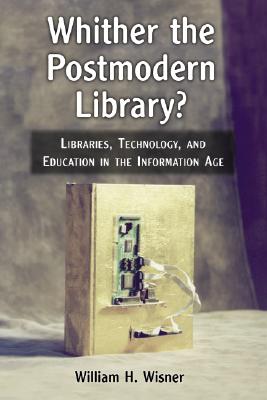
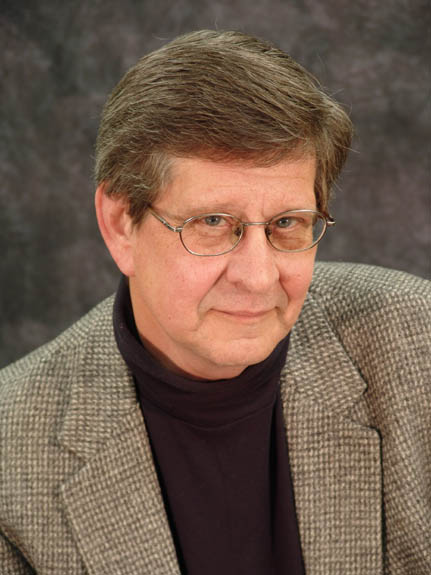
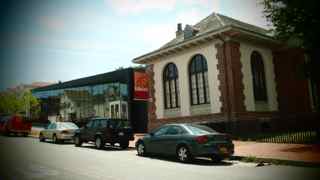
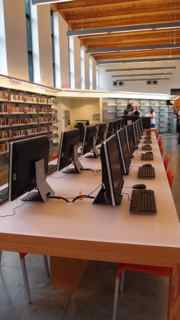
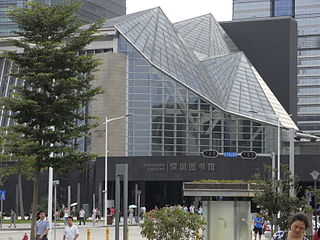
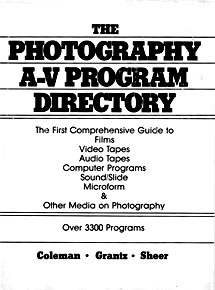
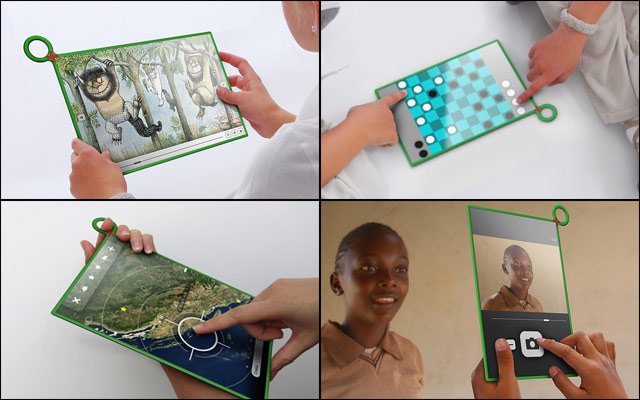




Allan,
It may not surprise you that our Monroe County (Rochester, NY) Library System does not own a copy of Whither the Postmodern Library. I just finished reading George Packer’s The Unwinding. Copies available at many branches and most of them checked out to readers at this time. Some chapters made me weep.
Thanks for this,
ahe
I wanted to thank you for your current “There Will Be Ink” columns.
It happily recalled to mind my own experiences growing up with a neighborhood branch library ― in this case the Heights Branch of the Houston Public Library.
Same sort of situation for me: the small, antiquated, library with architecture of an earlier age and stacks and stacks and stacks of books where I got immersed, lost, found and found again. I remember the hushed atmosphere, the helpful librarians, the armloads of books carried back and forth ― and most especially the process of discovery that lay in an old binding just down he shelf from where I might be looking for what next to read.
(I even got locked in one night back in the 50s ― one of the most non-frightening incidents of my youth…once I found the light switches.) Above all I think it was the aroma of old books ― what my conservators would probably remind me now was deteriorating paper, inks, cloth & leather ― that stays with me still. And which every now and then I can still discover to my delight once again in a corner of an old library or used bookstore.
And, like your Stapleton branch, the Heights branch has been partially restored and extended with some hybrid pre-post-modernist wing ― but it still goes doggedly on into the computer age. And you can still find that magical distillation of book aromas around some of its cozy corners.
Anyway, thanks for the trip back ― and long live all of the good branch libraries!
Best from Texas,
Roy
library dream – February 25, 2009
I was in a very new, very modern building. It was white inside and out. It had a circular staircase that entered from the entrance door to the outside and descended very steeply into an underground lobby. (I may have been borrowing from the very steep staircases at Chichen Itza I saw last week.)
A truck had tried to drive down this staircase but had come to grief just short of the end. There was a piano on the truck that had to be moved into the lobby. We were all standing around wondering how to get the piano off the truck. Funnily enough there already was a piano in the lobby and it seemed strange to be trying to deliver another one.
It turned out the building was a post modern library. I say “post-modern” as it didn’t have any books in it!
I walked down a hallway and saw cracks appearing in the floor outside of what looked liked an office door. There was a soft dark substance oozing through the cracks. The first thought I had was that this was some kind of Jurassic event. The word Jurassic came very strongly and precisely to my mind. It seemed likely that the floor would crack, and the substance flood into the room.
I made some enquiries. It turned out that the library was located in Philadelphia and was built over the top of a much older library. The older library was buried under the foundations of the new building. Apparently it fell into ruin and was sealed off with its collection of books still in it.
Was this ooze the essence of the books?